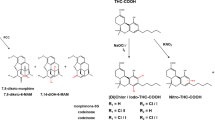Abstract
“Urine mobilization test,” “challenge test,” and “provoked urine test” are all terms used to describe the administration of a chelating agent to a person prior to collection of their urine to test for metals. There is no standard, validated challenge test. Despite recommendations by professional and government organizations against the use of provoked urine testing, the tests are still commonly used and recommended by some practitioners. Challenge testing utilizes a variety of chelating agents, including dimercaptosuccinic acid (DMSA), dimercaptopropanesulfonate (DMPS), and ethylenediaminetetraacetic acid (EDTA). The agents are given by a variety of routes of administration, doses used are inconsistent, and urine collection procedures vary. Additional problems with challenge tests include comparison of results to inappropriate reference ranges and creatinine correction of urine obtained within hours of chelator administration. Human volunteer studies demonstrate that mercury is detected in the urine of most people even in the absence of known exposure or chelator administration, and that urinary mercury excretion rises after administration of a chelator, regardless of exposure history and in an unpredictable fashion. Studies also demonstrate that challenge testing fails to reveal a “body burden” of mercury due to remote exposure. Chelating agents have been associated with adverse reactions. Current evidence does not support the use of DMPS, DMSA, or other chelation challenge tests for the diagnosis of metal toxicity. Since there are no established reference ranges for provoked urine samples in healthy subjects, no reliable evidence to support a diagnostic value for the tests, and potential harm, these tests should not be utilized.

Similar content being viewed by others
References
Cohen JP, Ruha AM, Curry SC, Biswas K, Westenberger B, Ye W et al (2013) Plasma and urine dimercaptopropanesulfonate concentrations after dermal application of transdermal DMPS (TD-DMPS). J Med Toxicol 9(1):9–15
Charlton N, Wallace KL (2009) Post-chelator challenge urinary metal testing. AMCT position statement. http://www.acmt.net/cgi/page.cgi/zine_service.html?aid=2999&zine=show. Accessed 28 July 2013
Risher JF, Amler SN (2005) Mercury exposure: evaluation and intervention: the inappropriate use of chelating agents in the diagnosis and treatment of putative mercury poisoning. NeuroToxicology 26:691–699
Barrett S. How the urine toxic metals test is used to defraud patients. http://www.quackwatch.com/01QuackeryRelatedTopics/Tests/urine_toxic.html. Accessed 28 July 2013
Nichols A. Heavy metal poisoning and safe detoxification. http://evenbetterhealth.com/heavy-metal-poisoning.asp. Accessed February 2012
The Great Plains Laboratory. Metals urine testing. http://greatplainslaboratory.com/home/eng/metals_urine.asp. Accessed 28 July 2013
Patients Medical (2013) Health AZ. http://patientsmedical.com. Accessed Feb 2012
Crinnion WJ (2009) The benefit of pre- and post-challenge urine heavy metal testing: part 2. Alternat Med Rev 14(2):103–108
Molin M, Schiitz A et al (1991) Mobilized mercury in subjects with varying exposure to elemental mercury vapour. Int Arch Occup Environ Health 63:187–192
Fielding J (1965) Differential ferrioxamine test for measuring chelatable body iron. J Clin Path 18:88–89
Keberle H (1964) The biochemistry of desferrioxamine and its relation to iron metabolism. Ann NY Acad Sci 119:758–768
Proudfoot AT (1995) Antidotes: benefits and risks. Tox Let 82/83:770–783
Whitaker JA, Austin W, Nelson JD (1962) Edathamil calcium disodium (versenate) diagnostic test for lead poisoning. Pediatrics 29:384–388
Chisolm JJ (1987) Mobilization of lead by calcium disodium edetate. AJDC 141:1256–1257
Nicastro E, Ranucci G et al (2010) Re-evaluation of the diagnostic criteria for Wilson disease in children with mild liver disease. Hepatology 52:1948–1956
Vieira et al (2012) Urinary copper excretion before and after oral intake of D-penicillamine in parents of patients with Wilson's disease. Dig Liver Dis 44(4):323–327
Aposhian HV, Bruce DC, Alter W, Dart RC, Hurlbut KM, Aposhian MM (1992) Urinary mercury after administration of 2,3-dimercaptopropane-1-sulfonic acid: correlation with dental amalgam score. FASEB J 6:2472–2476
Archbold GP, McGuckin RM, Campbell NA (2004) Dimercaptosuccinic acid loading test for assessing mercury burden in healthy individuals. Ann Clin Biochem 41:33–236
Ruha AM, Curry SC, Gerkin RD, Caldwell KL, Osterloh JD, Wax PM (2008) Urine mercury excretion following DMSA challenge in fish eaters. Arch Pathol Lab Med 132:4–9
Gonzalez-Ramirez D, Maiorino RM, Zuniga-Charles M, Xu Z, Hurlbut KM, Junco-Munoz P et al (1995) Sodium 2,3-dimercaptopropane-1-sulfonate challenge test for mercury in humans: II. Urinary mercury, porphyrins, and neurobehavioral changes of dental workers in Monterrey, Mexico. J Pharmacol Exp Ther 272(1):264–274
Maiorino RM, Gonzalez-Ramirez D, Zuniga-Charles M, Xu Z-F, Hurlbut KM, Aposhian MM et al (1996) Sodium 2,3-dimercaptopropane-1-sulfonate challenge test for mercury in humans. III. Urinary mercury after exposure to mercurous chloride. J Pharmacol Exp Ther 277:938–944
Frumkin H, Manning CC, Williams PL, Sanders A, Taylor BB, Pierce M et al (2001) Diagnostic chelation challenge with DMSA: a biomarker of long-term mercury exposure? Environ Health Perspect 109(2):167–171
Vamnes JS, Eide R, Isrenn R, Höl PJ, Gjerdet NR (2000) Diagnostic value of a chelating agent in patients with symptoms allegedly caused by amalgam fillings. J Dent Res 79(3):868–874
Grandjean P, Guldager B, Larsen B, Jørgensen PJ, Holmstrup P (1997) Placebo response in environmental disease: chelation therapy of patients with symptoms attributed to amalgam fillings. J Occ Env Med 39(8):707–714
Conflict of interest
For the work under consideration for publication, Dr. Ruha received an honorarium (which she donated to MTF) and reimbursement for travel through the ACMT/ATSDR Cooperative Agreement. As relevant financial activities outside the submitted work, Dr. Ruha is a BTG and RDT paid speaker.
Author information
Authors and Affiliations
Corresponding author
Additional information
ATSDR disclaimer
This publication was supported by the cooperative agreement award number 1U61TS000117-04 from the Agency for Toxic Substances and Disease Registry (ATSDR). Its contents are the responsibility of the authors and do not necessarily represent the official views of the Agency for Toxic Substances and Disease Registry (ATSDR).
Rights and permissions
About this article
Cite this article
Ruha, AM. Recommendations for Provoked Challenge Urine Testing. J. Med. Toxicol. 9, 318–325 (2013). https://doi.org/10.1007/s13181-013-0350-7
Published:
Issue Date:
DOI: https://doi.org/10.1007/s13181-013-0350-7




